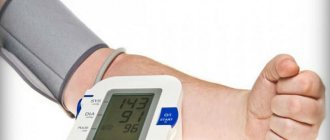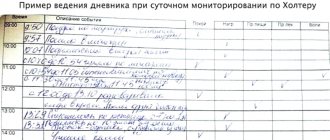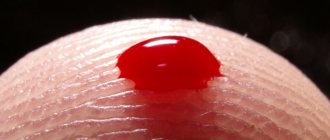Main indications for an ECG
Traditionally, ECG diagnosis is carried out:
- to record the electrical activity of the heart muscle;
- searching for the causes of unexplained pain in the chest area;
- Diagnose heart disease if symptoms are present (eg, dizziness, irregular or rapid heartbeat, fainting, difficulty breathing);
- Identifying side effects of taking medications, assessing the degree of their impact on heart health;
- checking the operation of implants (pacemakers, etc.);
- diagnostics of heart health (if there are signs and risk factors for the development of pathologies - hereditary predisposition, smoking, diabetes, high cholesterol, blood pressure, etc.);
- assessment of heart function (ECG of pregnant women) with increasing load on the body.
In what cases is an ECG prescribed?
A routine examination is indicated for all patients admitted to the hospital department. Unscheduled and emergency electrocardiography is carried out in case of development or suspicion of myocardial damage of any nature (toxic, inflammatory, ischemic).
Direct indications for an ECG are:
- metabolic syndrome;
- heartbeat instability;
- chronic diseases of the cardiovascular system;
- circulatory disorders;
- changes in myocardial structure;
- endocrine diseases;
- rheumatism;
- monitoring the operation of the pacemaker;
- chronic respiratory pathologies;
- preparation for surgery.
Medical indications for an ECG are:
- periodic pain in the chest, back, neck;
- shortness of breath and difficulty breathing both at rest and after physical exertion;
- high blood pressure;
- swelling of the lower extremities, constant weakness, fainting;
- previous stroke/myocardial infarction;
- age over 40 years (annually).
Pregnant women undergo electrocardiography upon registration, as well as in the presence of alarming symptoms (fainting, dizziness, changes in blood pressure).
An ECG is sometimes recommended in the following situations:
- medical examination (admission to kindergarten, school, secondary and higher educational institutions);
- preventive examination;
- before the driver's license test;
- issuing a certificate for visiting the pool and practicing active sports;
- registration for sanatorium treatment.
The procedure has no contraindications, except for patients with chest deformation, purulent wounds and inflammatory diseases of the skin in the thoracic area.
Preparing for an ECG
On the day of the ECG diagnosis, you need to get a good night's sleep. It is not advisable to perform any physical exercise (exercise, jogging, etc.). If the ECG at the clinic is scheduled for early morning, then you need to avoid a heavy breakfast. During the day procedure, you should limit yourself to a light snack 2 hours before the start of the session.
It is important to avoid tea, coffee, energy and other drinks on the day of electrocardiography, as they stimulate the activity of the heart, as a result of which the results may be distorted. The use of medications that have a vasoconstrictor effect (including some eye drops, cold remedies, etc.) is excluded. Smoking is strictly prohibited 2 hours before the cardiac ECG.
You should not apply various care products (lotions, creams) to your body, as their components form a greasy film on the surface, which in turn negatively affects the contact of the electrodes with the skin.
Where to get an ECG
You can undergo electrocardiography and receive a detailed doctor’s report based on the results of the study at the MART multidisciplinary medical center. An ECG in our clinic is a highly accurate examination of the cardiovascular system, with which you can identify various disorders and, based on the data obtained, take the necessary measures in a timely manner and prevent the development of a pathological process.
—>
At the MART clinic on Vasilyevsky Island
- Evidence-based medicine
- Experienced specialists
- Monitoring of patients for 6 months.
- Diagnostics (MRI, ultrasound, tests)
- Daily 8:00 – 22:00
Make an appointment
Our ECG office is equipped with the most modern equipment, which ensures maximum accuracy of the study. Diagnostics and interpretation of results are carried out exclusively by experienced specialists.
A referral for an ECG at the MART clinic is not required.
Carrying out an ECG
Electrocardiography can be carried out as part of a comprehensive therapeutic or cardiological examination or be an independent diagnostic procedure. Modern equipment allows you to conduct an affordable ECG in the clinic and at home.
During electrocardiography, the person is in a horizontal position. Special electrodes are attached to the legs, arms and chest. They connect to the ECG machine, the doctor checks all the settings and starts the process. Analysis of cardiac muscle activity is displayed on a paper electrocardiography tape.
During the diagnosis, you should lie still and maintain a natural breathing rhythm. Sometimes during the ECG procedure, the doctor will ask you to hold your breath. The whole process takes about 5-10 minutes and is absolutely painless and safe. There are currently no contraindications for its implementation.
How does electrical wiring work in the heart?
So, an electrocardiogram, according to its name, records electrical processes occurring in the heart. Let's figure out what and how is happening there. In the depths of the heart muscle there are special groups of cells that make up the so-called conduction system of the heart. For simplicity, you can imagine it in the form of electrical wiring embedded in the wall, although in reality everything is a little more complicated.
The “power source” of a healthy heart is the sinus node , which is located in the right atrium. For those who are familiar with electricians, it can be compared to a capacitor. The sinus node accumulates a charge and then emits electrical impulses at a certain frequency that cause the heart to contract. Consequently, if “the battery is good,” then the first line of the cardiogram conclusion will read: sinus rhythm .
Sinus rhythm is the normal physiological rhythm of the heart.
The heart has four chambers - two atria and two ventricles. The atria contract first, then the ventricles. In order for this to happen in exactly this sequence, it is necessary that the electrical impulse first excites the atria and then switches to the ventricles. This switching occurs in the so-called atrioventricular node. More often it is called in Latin the atrioventricular node (atrium - atrium, ventriculum - ventricle), and even more often - simply AV node .
Two “wires” emerge from the AV node, which, after the author’s surname, are called bundle branches . Through the right bundle branch, the electrical signal is mainly conducted to the right ventricle, and through the left bundle branch, of course, to the left ventricle. Since the left ventricle is the largest chamber of the heart, and it needs a lot of electrical supply, the left leg is also divided into anterior and posterior branches. This is how the complex conduction system of the heart turns out. If an accident occurs in a particular area of the power supply, we will call this a “conduction block” or a disturbance in the conduction of the heart.
Types of ECG of the heart
There are several types of ECG of the heart muscle. They allow the patient’s health to be assessed as objectively as possible under different conditions.
The classic electrocardiography procedure described above is carried out over a short period of time and helps to assess the condition of the organ at the time of the procedure. However, a number of heart problems manifest themselves only during certain human conditions - eating, physical activity or sleep, and therefore it is very difficult to record an attack in a clinic at a doctor’s appointment. In order to solve the above problems, it is necessary to do special types of electrocardiography.
Holter ECG monitoring . Today, continuous Holter ECG is common, providing continuous recording of the work of the heart muscle for 24-72 hours. It is also called 24-hour electrocardiography. Now there are even devices that are implanted under the skin (in the area of the heart) and provide continuous recording for 1 year.
Another type of 24-hour electrocardiography is intermittent ECG monitoring. It is used when symptoms of cardiac muscle dysfunction do not appear very often. It does not have to be done in a clinic. The device for such measurements is portable and can, if necessary, be worn on the wrist like a watch. The back panel of the device is equipped with small metal disks that work on the principle of electrodes. When symptoms of cardiac pathologies appear, you need to press a button on the device and data recording will begin.
Stress ECG . In some cases, patients need to have a stress ECG. During it, a person performs physical exercises: running on a treadmill, etc. The results of such electrocardiography are compared with the data obtained after the corresponding procedure at rest. This allows for the most effective assessment of heart function.
It is important to know that in some cases, stress electrocardiography is contraindicated. It is imperative to inform your doctor about high blood pressure, angina pectoris, arrhythmia, heart and lung diseases, suspected heart attack, etc.
What is ECG
Almost everyone knows how an electrocardiogram is recorded. 10 electrodes are placed on the human body: four electrodes on the limbs (two on the arms, two on the legs) and six electrodes on the chest. In order for the electrical signal to be well conducted, the skin at the site of contact with the electrode is moistened with water or a special gel. The better the contact, the better the quality of the electrocardiogram.
The duration of a standard ECG recording is about 10 seconds. Sometimes the second part of the recording is performed while inhaling; During inhalation, the position of the heart in the chest changes slightly, and we receive additional food for thought.
Of course, 10 seconds is very little. After all, if in this short time the patient does not have arrhythmia, there is no disturbance in the blood supply to the heart, this does not mean that he never has them at all. Therefore, if necessary, the doctor will recommend additional studies, for example, Holter ECG monitoring or stress tests. So, for example, if it seems to us that some wall of the heart is thickened (hypertrophied), then the next step will be to perform echocardiography (ultrasound), during which it will be possible to measure the thickness of the wall with an accuracy of a millimeter.
Decoding
ECG interpretation allows you to assess the regularity of the heart rhythm (normal, too fast, too slow, irregular), as well as the general condition of the heart muscle, the presence of certain pathological processes (cardiomyopathy, myocardial infarction, pericarditis). Interpretation of data obtained from cardiac electrocardiography is a rather complex process. The decoding must be carried out by a highly qualified specialist who can accurately determine the nuances of each graph.
Our clinic offers you an ECG of the heart muscle in Moscow. Competent doctors will professionally and accurately interpret the data obtained and present the results in an accessible manner. Call us on the phone in Moscow + 7 (495) 223-38-83 . The clinic’s consultants will tell you in detail about the ECG, the price, and will also sign you up for the procedure.
What should not be done during a Holter examination?
A Holter examination monitors the patient's heartbeat around the clock. This allows you to determine the cause of the arrhythmia and the factors causing cardiac disorders. The patient lives a normal life, however, for the results to be reliable, he must follow several recommendations:
Reduce the use of your mobile phone as this may cause interference with the device. If you must use it, try to keep the phone as far away from the ECG recorder as possible. It is not advisable to take a bath. For one day, you need to change your daily habits a little and take a closer look at your body and its reaction to specific situations.








